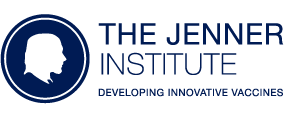Effects of different types of written vaccination information on COVID-19 vaccine hesitancy in the UK (OCEANS-III): a single-blind, parallel-group, randomised controlled trial.
Freeman D., Loe BS., Yu L-M., Freeman J., Chadwick A., Vaccari C., Shanyinde M., Harris V., Waite F., Rosebrock L., Petit A., Vanderslott S., Lewandowsky S., Larkin M., Innocenti S., Pollard AJ., McShane H., Lambe S.
BackgroundThe effectiveness of the COVID-19 vaccination programme depends on mass participation: the greater the number of people vaccinated, the less risk to the population. Concise, persuasive messaging is crucial, particularly given substantial levels of vaccine hesitancy in the UK. Our aim was to test which types of written information about COVID-19 vaccination, in addition to a statement of efficacy and safety, might increase vaccine acceptance.MethodsFor this single-blind, parallel-group, randomised controlled trial, we aimed to recruit 15 000 adults in the UK, who were quota sampled to be representative. Participants were randomly assigned equally across ten information conditions stratified by level of vaccine acceptance (willing, doubtful, or strongly hesitant). The control information condition comprised the safety and effectiveness statement taken from the UK National Health Service website; the remaining conditions addressed collective benefit, personal benefit, seriousness of the pandemic, and safety concerns. After online provision of vaccination information, participants completed the Oxford COVID-19 Vaccine Hesitancy Scale (outcome measure; score range 7-35) and the Oxford Vaccine Confidence and Complacency Scale (mediation measure). The primary outcome was willingness to be vaccinated. Participants were analysed in the groups they were allocated. p values were adjusted for multiple comparisons. The study was registered with ISRCTN, ISRCTN37254291.FindingsFrom Jan 19 to Feb 5, 2021, 15 014 adults were recruited. Vaccine hesitancy had reduced from 26·9% the previous year to 16·9%, so recruitment was extended to Feb 18 to recruit 3841 additional vaccine-hesitant adults. 12 463 (66·1%) participants were classified as willing, 2932 (15·6%) as doubtful, and 3460 (18·4%) as strongly hesitant (ie, report that they will avoid being vaccinated for as long as possible or will never get vaccinated). Information conditions did not alter COVID-19 vaccine hesitancy in those willing or doubtful (adjusted p values >0·70). In those strongly hesitant, COVID-19 vaccine hesitancy was reduced, in comparison to the control condition, by personal benefit information (mean difference -1·49, 95% CI -2·16 to -0·82; adjusted p=0·0015), directly addressing safety concerns about speed of development (-0·91, -1·58 to -0·23; adjusted p=0·0261), and a combination of all information (-0·86, -1·53 to -0·18; adjusted p=0·0313). In those strongly hesitant, provision of personal benefit information reduced hesitancy to a greater extent than provision of information on the collective benefit of not personally getting ill (-0·97, 95% CI -1·64 to -0·30; adjusted p=0·0165) or the collective benefit of not transmitting the virus (-1·01, -1·68 to -0·35; adjusted p=0·0150). Ethnicity and gender were found to moderate information condition outcomes.InterpretationIn the approximately 10% of the population who are strongly hesitant about COVID-19 vaccines, provision of information on personal benefit reduces hesitancy to a greater extent than information on collective benefits. Where perception of risk from vaccines is most salient, decision making becomes centred on the personal. As such, messaging that stresses the counterbalancing personal benefits is likely to prove most effective. The messaging from this study could be used in public health communications. Going forwards, the study highlights the need for future health campaigns to engage with the public on the terrain that is most salient to them.FundingNational Institute for Health Research (NIHR) Oxford Biomedical Research Centre and NIHR Oxford Health Biomedical Research Centre.

